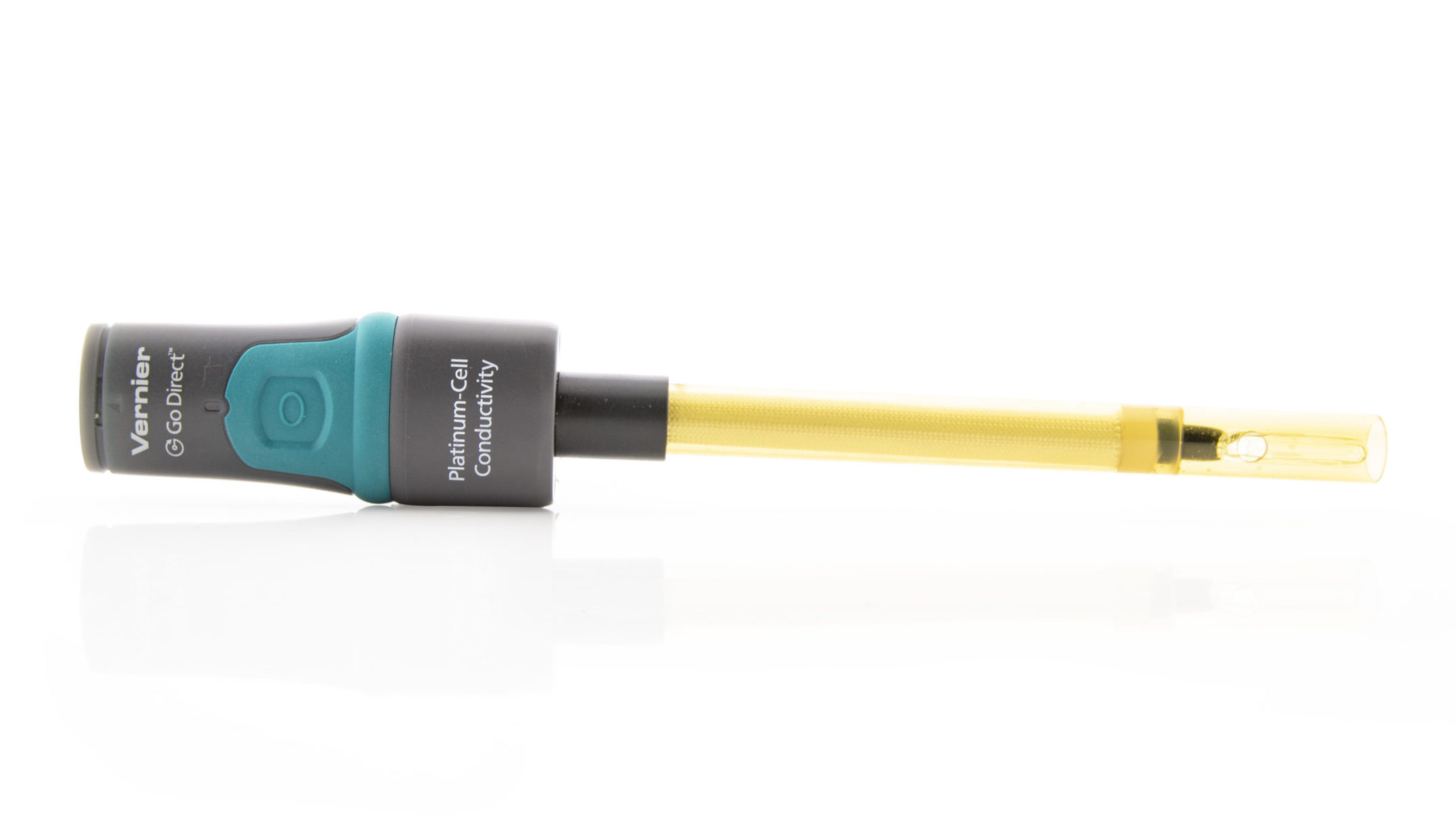Troubleshooting
Primary Test: Press the power button on the sensor to turn it on. Connect your sensor as described in the Getting Started instructions for your device. (The green LED will flash to indicate the sensor is connected.)
- Take a reading in a solution of known value. A reading close to that value should register.
For best results rinse the electrode in deionized water first, let it sit in a 1413 uS/cm standard for about 1 minute, then calibrate in the software at 1413 uS/cm.
Additional Troubleshooting
- Where do I get Conductivity Standards?
- What material are your Conductivity Probes made of?
- What chemicals can I use with your conductivity probes?
- Go Direct sensor does not connect to LabQuest 2 via Bluetooth.
- How do I replace the battery in a Go Direct Wand-Style Sensor?
- Troubleshooting Bluetooth Connections with Go Direct Sensors
- What can I do if a Go Direct sensor's Bluetooth LED flashes red and green when I try to connect to it and the connection fails?
- Will my device work with Go Direct Sensors via Bluetooth?
- How do I know if my LabQuest will work with Go Direct Sensors and Go Wireless devices?
Specifications
- Description: Epoxy body, 2-cell platinum element electrode
- Range: 0 to 20,000 μS/cm (0 to 10,000 mg/L TDS)
- Resolution: 0.01 µS/cm
- Accuracy: ±10 µS/cm (valid for 1 to 4,000 µS/cm with custom one-point calibration at 1413 µS/cm)
- Temperature compensation: Automatic from 5 to 35°C, can be turned off
- Temperature range (can be placed in): 0 to 80°C
- Cell constant: 1.0 cm-1
- Dimensions: 12 mm OD and 12 cm length
- Connections:
⚬ Wireless: Bluetooth® v4.2 (wireless range 30 m unobstructed)
⚬ Wired: USB 2.0 full speed - Battery: 300 mA Li-Poly
⚬ Battery Life (single, full charge): ~24 hours continuous data collection
⚬ Battery Life (lifetime): 2 – 5 years (typical)
Calibration
Calibrate? Yes. Given the nature of the platinum-cell electrode, a one-point calibration is strongly recommended prior to each use. For best results rinse the electrode in deionized water first, let it sit in a 1413 µS/cm standard for about 1 minute, then calibrate in the software at 1413 µS/cm. For more information on calibration, see
- How do I calibrate my sensor?
- Why can I only perform a one-point calibration with my Go Direct Conductivity sensor?
Battery Troubleshooting
- If the sensor can be turned on when connected by USB but not when disconnected from USB, the battery either needs charging or has reached its end of life and can no longer hold a charge.
⚬ First, try charging the sensor for several hours. - If the sensor still won’t turn on when disconnected from USB, try swapping the battery with a working sensor to see if the problem follows the battery or stays with the sensor.
⚬ If the problem stays with the sensor, the battery is probably not the issue.
⚬ If the problem follows the battery, the battery has likely reached its end of life. - If you intend to use this sensor wirelessly, its battery will need replacing.
Go Direct® 300 mAh Replacement Battery (GDX-BAT-300 ) - See How do I replace the battery in a Go Direct Wand-Style Sensor? for more information.
Rechargeable batteries are covered by a one-year warranty.
Batteries should last two to five years in typical use.
Related Products
- Micro USB to USB-C Cable (
CB-USB-C-MICRO ) - Go Direct® Charge Station (
GDX-CRG ) - Conductivity Standard Solutions
⚬ CON-LST: Low—150 µS/cm
⚬ CON-MST: Medium—1413 µS/cm
⚬ CON-HST: High—12,880 µS/cm - Electrode Support (
ESUP ) - Go Direct® Sensor Clamp (
GDX-CLAMP ) - Go Direct® Conductivity Probe (
GDX-CON ) - Conductivity Probe (
CON-BTA ) - Platinum-Cell Conductivity Probe (
CONPT-BTA )
Replacement Parts
- Go Direct® 300 mAh Replacement Battery (
GDX-BAT-300 ) - Micro USB Cable (
CB-USB-MICRO )

